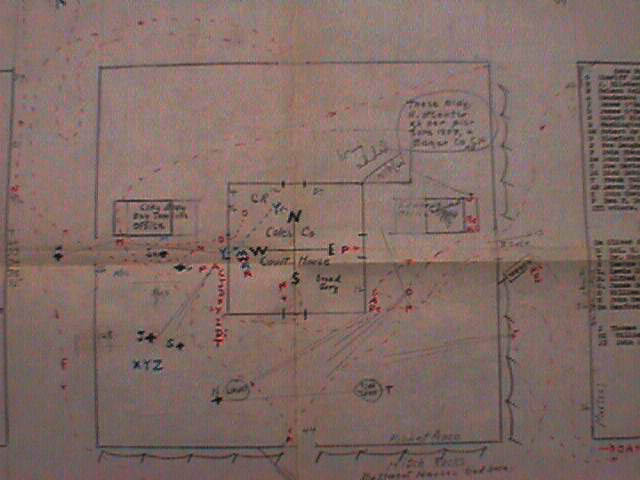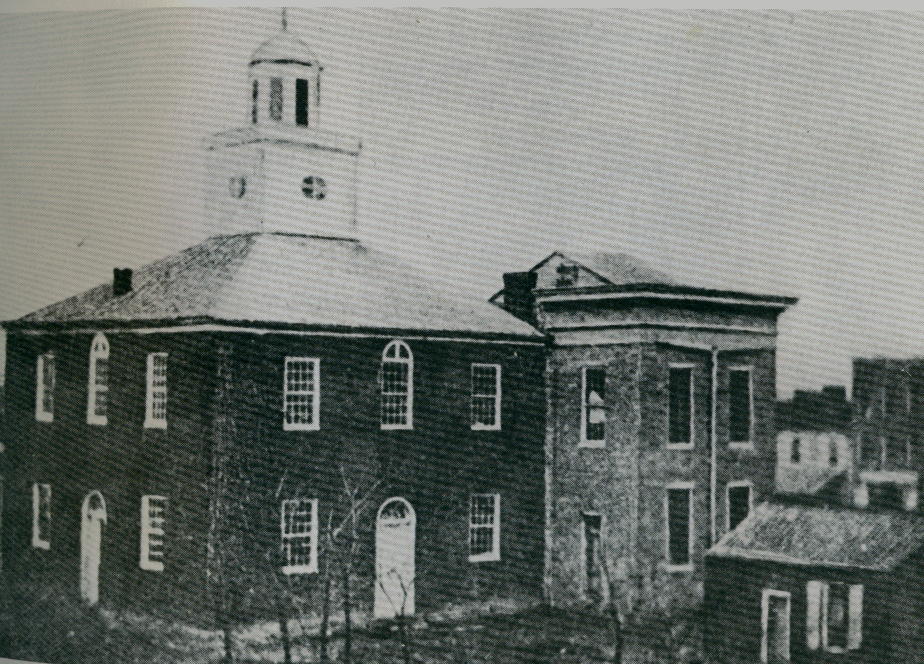CCLHP: The Charleston Riot

Charleston Riot
Drawing By Mimi Jobe, depicting the first few moments of the riot.
Courthouse Photo, was obtained from Shick, Nancy Easter., Douglas K. Meyer eds. Pictorial Landscape History of Charleston, Illinois. (Charleston, IL: Rardin Graphics, 1985), 25-26.
The Charleston Riot occurred on March 28, 1864 after Union soldiers and local Republicans clashed with local insurgents known as "Copperheads." By the time the riot had subsided, nine were dead and twelve had been wounded. The news coverage of the event defined that the Peace Democrats were responsible for beginning the event. One such news source, (first in the Chicago Tribune and later reprinted in the Charleston Courier), labeled Nelson Wells as the instigator of the conflict. Most articles published from the time insist that the whole event transpired as a more spontaneous event, and was not directly prompted by any one individual. The most likely explanation is that the event occurred because a sizable presence, of both Copperheads and Union soldiers, had been in town that day. Also many sources speculate that a sizable portion of the participants, at least on the side of the peace democrats, had been drinking quite heavily all day, leading to the outbreak which resulted in the confrontation. At any rate, the fighting only lasted a few moments. But by the time the affair was over, the Copperheads had been run out of Charleston. Rewards had been issued for the capture of any of those whom fled the scene. Included in those who left town was John O’Hair, the leader of the Copperheads, who had been the sheriff of Coles County. Out of those killed, only two had been Copperheads, (Nelson Wells and John Cooper). The other participants had been either captured or escaped. Other Union troops were called in from Mattoon to assist the soldiers fighting in Charleston, but by the time their train had arrived, none of the instigators were left in the town.
The terms Copperheads and Butternuts were used to describe the larger movement, which had been known as Peace Democrats. This political affiliation which stirred up support, as David Montgomery points out in "Beyond Equality: Labor and the Radical Republicans", by incorporating the fears that the government’s war effort sought to usurp the constitution. Montgomery also points out that the Copperheads incorporated a racial component to their disdain for the Northern war effort, and suggested that emancipated Negroes would flood the North because of the Emancipation Proclamation. Using racially charged rhetoric, Copperheads sought to unite opposition to the Radical Republicans. This had become a national phenomenon during the Civil War. Southern Sympathizers were battling to keep their country from becoming, in their eyes, too radical.
The Copperheads represented a political affiliation that was staunchly opposed to Lincoln, the draft, and abolition of slavery. This group favored an armistice to end the Civil War because they opposed the war itself. Most components of Copperhead ideology centered on the mistrust of the implications the war presented to American society. In particular, the aim to free the slaves had become an issue that some natives of Illinois took issue with. The Civil War had split the country into factions, and each side chose to support or oppose the aim to reincorporate the Southern States back into the Union. The Copperheads believed the Lincoln Administration had been out of line by abolishing slavery. Some citizens of Coles County accepted the ideology that it was not in the best interest of the country to free the slaves. Although the exact number is hard to gauge, it has been estimated by Victor Hicken in Illinois in the Civil War, that Coles County had been a significant pocket of Copperhead sympathizers. This idea is supported by the fact that John O’Hair, the leader of the Copperheads, had been the sheriff of Coles County during the Civil War.
In the end, the Charleston Riot provides a good example of how local events of Coles County history have fit into national currents as well. The Copperheads of Coles County had been different from other dissenting groups from around the country, in that they chose to use physical violence as their method of dissent. By killing Union soldiers, who had become the emblem of government control, the Copperheads were attempting to project their anger toward the government. The draft, a strong central government, and racism fueled the Copperheads support within the county. In March of 1864, these national tensions boiled over in the small town of Charleston, creating one of the most interesting events in the history of the county.

Map drawn by Adin Baber, October 1, 1939. Mr. Baber used Charles Coleman's research to reconstruct the Square of Charleston during the Riot of 1864.
Eastern Illinois University Archives, 1939.Coleman, Charles, Adin Baber, Charles Coleman Papers.
Newspaper Sources
These newspaper articles have been transcribed in order to give insight into how the Charleston Riot was covered in the news media at the time of the event. Most of these articles deal with the individuals, especially copperheads, during the riot.

The Charleston Riot took place around this courthouse as pictured in Adin Baber's drawing of the affair.
Courthouse Photo, was obtained from Shick, Nancy Easter., Douglas K. Meyer eds. Pictorial Landscape History of Charleston, Illinois. (Charleston, IL: Rardin Graphics, 1985), 25-26.
Charleston Riot Sources
-
Charleston Plain Dealer, March 31 1864; and Illinois Copperheads: Analyzing the Documents, compiled by Terry Barnhart
- The source contains excerpts transcribed by Eastern professor Dr. Terry A. Barnhart. The original author of the article sympathizes with the Union soldiers, the source is valuable because of its description of key events and it names participants in the "riot." Dr. Barnhart provides some useful questions that relate to the article, and can move students into deeper research on the topic.
-
Sampson, Robert D. "Pretty Damned Warm Times: The 1864 Charleston Riot and 'the inalienable right of revolution.'" Illinois Historical Journal 89 no. 2 (Summer 1996): 99-116. Charles Edward Wilson. History of Coles County, Illinois. Chicago, 1905.
- The author uses a variety of sources including many depositions taken after the incident and newspapers that covered the event. Within the article, many of the participants and their role in the riot are discussed. Also, the article discusses reasons for tensions between soldiers and copperheads not only in Charleston, but also in surrounding areas.
-
List of Depositions for March 28th, 1864 Charleston Riot, Coles County Courthouse, Charleston.








